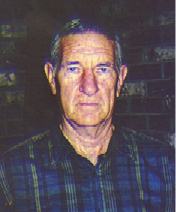Construction Worker Uses Pain Management To Battle His MM
James Morse was born and raised in Siren, Wisconsin 65 years ago. When James was 13, he began working for his father, also a carpenter, digging trenches for home foundations. During his high school summer breaks, James worked with his father, building homes in the Siren, Wisconsin area. By the time he had graduated from high school, when most of us barely have a clue let alone a skill, James knew how to mix concrete, build forms, frame houses, tape, drywall, and roof houses.
Mr. Morse had always been a hard worker. As the father of nine children, James found it necessary to work wherever he could find work. He worked in Wisconsin, Minnesota, California and Oregon. His only hobby was bowling. James was an excellent bowler, and in the 1960's was asked to join the Professional Bowling Association. He refused the offer, however, because he felt that he needed a stable career in construction to support his family.
In the fall of 1997, while living and working in the Woodburn, Oregon area, James noticed he was having some difficulty breathing. By November, he had developed a serious cough. Thinking he had pneumonia, James sought medical attention at the Canby Clinic in Canby, Oregon. The doctor ordered chest films, which revealed that his left lung was "clouded over," but further tests were needed in order to diagnose the problem.
On December 4, 1997, James went to Willamette Falls Hospital in Oregon City, Oregon. A thoracentesis (a surgical puncture of the chest wall to remove fluid) was performed. Two liters of fluid were collected from his lung and sent to the laboratory for analysis. The test results were inconclusive. The doctors shrugged it off and prescribed antibiotics.
When the pain and shortness of breath continued, Jame's physician scheduled a consultation with a thoracic surgeon. During the January 27, 1998 examination, a CT scan revealed a pleural effusion, calcium deposits on the lining of the lung, and a possible tumor in the left pleural space. The doctors recommended surgery to remove the fluid and also to biopsy the suspicious tissue.
On February 17, 1998, James was admitted to Kaiser Permanente Hospital in Portland for a thoracotomy. During the surgery, biopsies were taken from several locations in the left chest cavity, and multiple adhesions were removed from the lung and chest. The surgeons noted that the pleura was thickened in the lower left lung lobe, so they removed some of the pleura in order to improve left lung expansion. An air leak was also discovered, so the lung was deflated and a sterile talc was insufflated (blown) into the chest cavity, completely covering the lung and chest wall. A pathologist used staining and immunostaining techniques to analyze the tissue samples. The pathologists diagnosed malignant mesothelioma.
After surgery, James was in pain. To relieve the pain, he took Vicodin. On the sixth day following surgery, his chest tube was removed. James was discharged from the hospital on February 23, 1998.
On March 5, 1998, James had his first visit with an oncologist. The doctor explained to him that he had mesothelioma and that his prognosis was grim. The oncologist told him that there was no known cure for mesothelioma, nor any guarantee that treatment would extend his life. The oncologist also told him that the usual cancer treatments--chemotherapy and/or radiation--have been ineffective in battling mesothelioma. The oncologist explained that he may live just as long if he chose to monitor the cancer and treat the symptoms of pain. The doctors did not discuss photodynamic therapy, gene therapy or pleurectomy / decortication.
James was devastated by this news. After recovering from the initial pain of surgery, he was "ready to play with pain." His chief complaint was a feeling of constant fullness, followed by an occasional sharp jabbing pain on the lower left side of his abdomen. Otherwise, his appetite was fair and he had not lost too much weight. He had even returned to work part time.
After much agonizing, James decided to seek palliative care, treating only the symptoms as they occurred. He also started a regimen of natural herbs and supplements, such as Beta-carotene, shark fin cartilage, vitamins, and yew bark, hoping that these supplements would slow the progression of the cancer. Throughout the spring and summer of 1998, he continued to feel good.
In late August or early September, the pain worsened. At first, James thought he had a kidney stone. The doctors ordered an intravenous pyelogram on September 8, 1998, but it was negative. James felt the pain increase when he coughed or sneezed. His oncologist feared that the cancer had spread, so more chest films were ordered. However, the films did not reveal any changes or abnormalities from previous films. The oncologist prescribed 15 mg of MS Contrin and morphine orally for the pain. Unfortunately for James, the pain became constant, and was so excruciating that he could no longer work.
Concerned that James was not able to handle the pain, his oncologist scheduled an appointment for him with a pain management consultant. During his appointment on September 19, 1998, James described his pain as being different from the tightening of his chest he had experienced just after surgery. The "new" pain was a constant sharp pain on his left side, which extended forward to his upper abdomen above his belly button. The pain intensified when he bent over to tie his shoes or reached above his head. The morphine no longer provided any relief.
The pain management physician suggested a temporary nerve block. If effective, James would be a candidate for an intercostal nerve block. The nerve block procedure consists of cutting the nerves in the intercostal muscles between and on the outside of the ribs. The intercostal muscles control the volume of air in the chest when breathing. The theory is that cutting the nerves will relieve the pain associated with breathing (the expansion and deflation of the chest/rib cavity). The doctor explained the procedure to James, including the risks of bleeding, infection and possible nerve damage. James consented. The temporary procedure was performed at the doctor's office. Afterwards, the pain had subsided somewhat. James felt only a slight tenderness while bending or reaching when he returned home.
Two days later, James telephoned the pain management physician to report that the pain had ceased for a short time, unfortunately, had returned in full force. James underwent the full intercostal nerve block surgery on October 30, 1998.
However, the surgery did not improve Mr. Morse's suffering. Even after the surgery, he was still tormented with pain. After spending two days in bed, his doctor prescribed 300 mg. of Gabapendine to take in addition to the codeine that he had been taking.
On November 13, Mr. Morse died at home. His pain had finally ceased. He is survived by nine children.
** POSTED DECEMBER 17, 1998 **


